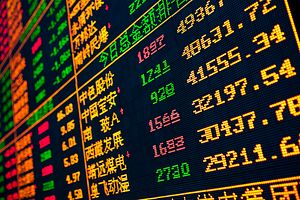Time for your Friday China links, starting with the great debate over the health of China’s economy…
Bill Bishop, editor of the Sinocism China Newsletter, gives his take on the current state of the Chinese economy. For Bishop, the major problem is not the current troubles in the stock market per se, but what those difficulties say about the ability of Chinese leaders to make smart economic policy. “[S]o long as Xi is making it clear that politics, not markets, are in command (政治挂帅), the odds increase that the upcoming Year of the Monkey will turn out to be the Year of the Bear,” Bishop writes.
Bishop’s piece came out just before the news that China was suspending its new “circuit-breaker” mechanism (though he predicted that move). As the Wall Street Journal reports, the China Securities Regulatory Commission admitted that the mechanism wasn’t working as expected, but instead was exacerbating the volatility it was meant to control. That’s a sharp departure from Tuesday, when the CSRC was still trying to claim the circuit breaker had successfully “calmed down investors and played a positive role in protecting their rights,” as per Xinhua.
Meanwhile, Xinhua’s new “Economic Watch” column debuted with a surprisingly pessimistic look at the state of the Chinese economy. However, it framed the current difficulties as necessary growing pains before reform kicks in and the economy stabilizes. “China is braced for unavoidable pains which it expects to precede future gains,” Xinhua said. The piece has more details on what 2016’s reforms are likely to be – notably attacking “zombie companies” as part of China’s emphasis on “supply-side reforms.”
Even as potential investors worry about China’s economy, Chinese investors are also looking at the rest of the world to determine where their money is best spent. According to a report from the Institute of World Economics and Politics of the Chinese Academy of Social Sciences, summarized here by South China Morning Post, some of the riskiest investment destinations are places where China has traditionally dropped lots of money in pursuit of oil: Venezuela, Iraq, and Sudan. The three safest destinations, on the other hand, were Germany, the United States, and the UK. Most of the states along China’s planned “Belt and Road” through Southeast and South Asia were rated as medium-level risks – something to keep in mind as Beijing pumps money into the new initiative.
On the military front, CRI has some more details on China’s new aircraft carrier, which is described as “totally different” from the Liaoning, the only carrier currently in the PLA Navy. According to experts interviewed by CRI, the new carrier is likely to have “weapon systems, such as China’s latest phased array radar, short-range anti-aircraft missiles and quick-firing cannons” and will have a “ski-jump” ramp for J-15s to take off (a detail already confirmed by China’s Ministry of Defense). The article also notes some potential strategic uses for the new carrier, from bolstering China’s position in territorial disputes to increasing the PLA Navy’s capability to conduct escort missions and protect sea lanes.
Finally, more on China’s response to North Korea’s nuclear test. Simon Denyer of the Washington Post argues that North Korea’s nuclear test was a “snub” of Beijing, which could increase domestic pressures for Chinese leadership to punish Pyongyang. However, China continues to push the “Six Party Talks” as the only possible way to deal with the nuclear issue, as evidenced by the Foreign Ministry press conference on Thursday.

































